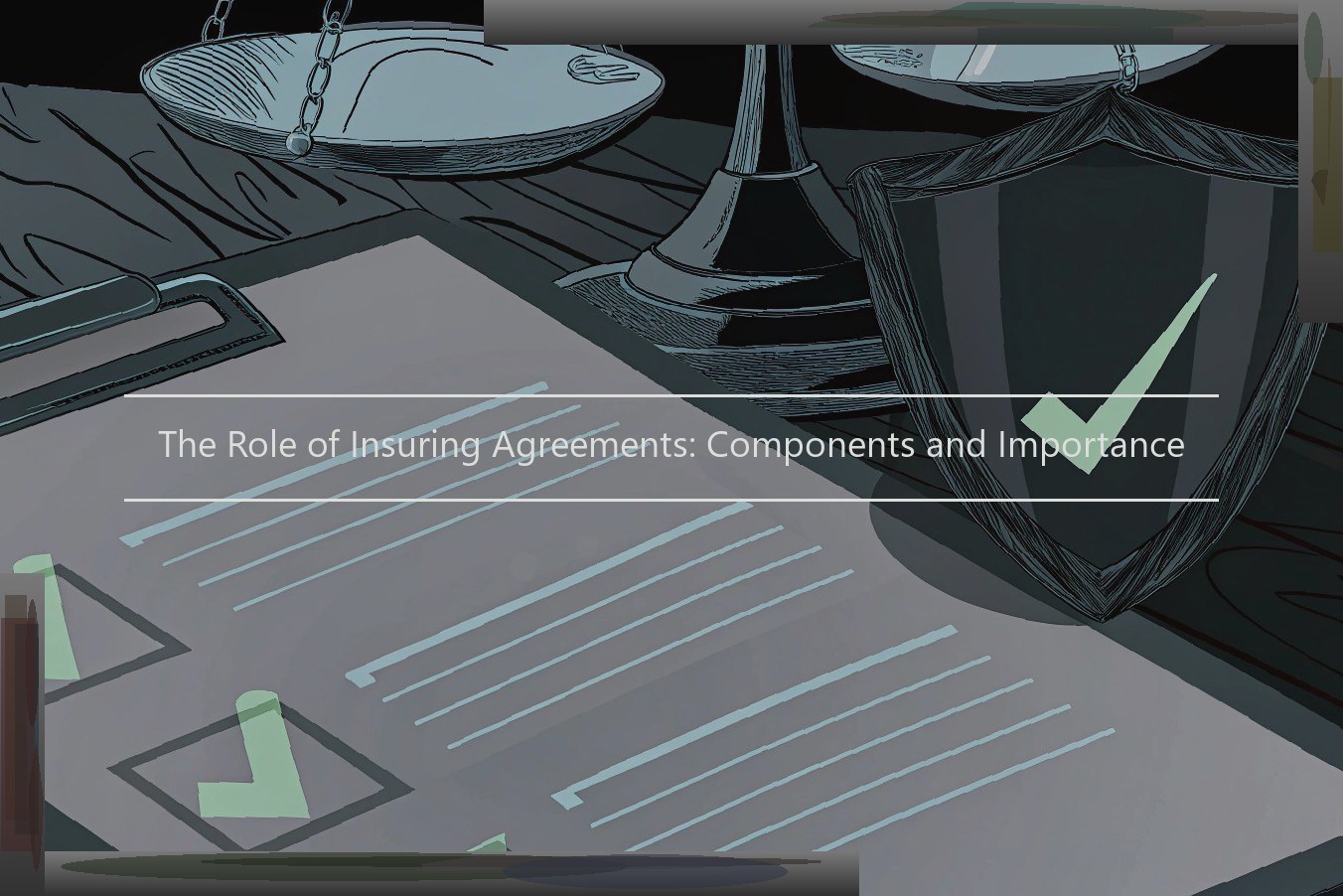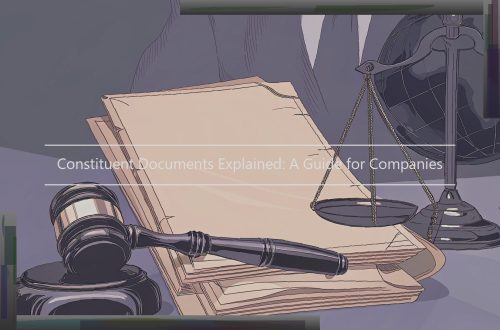The Role of Insuring Agreements: Components and Importance
An Insuring Agreement, Defined
In the realm of an insurance policy, the insuring agreement holds a pivotal role. Essentially, it defines the precise parameters of coverage by setting forth the obligations of the insurer to the insured. Accordingly, an insuring agreement is deemed to have been breached when a "risk covered" by the insuring agreement has given rise to a claim or lawsuit that is not a claim "not covered" by the policy.
Stated simply, an insuring agreement is the primary obligating instrument contained in a liability insurance policy and describes the risks that are covered , and the specific nature of the coverage afforded to claims made. A well-drafted insuring agreement may provide a direct comparison between the risks and claims that are covered, versus the risks and claims that are not covered. Thus, an insuring agreement typically includes: (1) a a list of the acts giving rise to a claim; (2) a description of the acts of those persons who are covered under the policy; and/or (3) a description of the types of claims that are covered under the policy.

Elements of an Insuring Agreement
Components of an Insuring Agreement include:
Scope of Coverage. An insuring agreement sets out the scope of coverage. With the number of different types of policies available in the marketplace, this is crucial. For example, a general liability insurance policy may be written on an occurrence basis or a claims made basis. An insuring agreement will set out which type of policy it is.
Perils. An insuring agreement can be liberally worded, but can still restrict or limit coverage for a particular peril under the insuring agreement.
Policy Limit. An insuring agreement will also specify the amount of coverage available for a peril and a ‘policy limit’ that limits the overall amount of coverage, irrespective of peril.
Types of Insuring Agreements
There are several different types of insuring agreements. Generally, they fall into two main types: insuring agreements that are limited to certain named perils and insuring agreements that insure against all risks.
Named Perils – With regard to insuring agreements that are "named perils", coverage is limited to those causes of loss expressly enumerated in the policy. Insuring agreements that are named perils are more narrowly written, but may be sufficient to provide the desired coverage where risks are known or limited. Such policies are often less expensive than all-risk policies.
All-Risk – All-risk policies, on the other hand, cover losses from any cause except for loss either specifically excluded from coverage or otherwise limited within the policy. The inapplicability of the exclusion or limitation is determined from the facts of each case. These policies are more expensive than named peril policies. The majority of commercial property insurance is issued on an all-risk basis.
Not all all-risk policies are all inclusive. Exclusions in all-risk policies must be expressed and are often contained in a separate section or separate form. An exclusion does not apply if it is determined that the facts of the loss do not match the terms of the exclusion (i.e. the loss does not fall within the range of the description of the excluded risk).
Why Insuring Agreements are Important
Insuring Agreements are a fundamental part of any insurance policy, serving to inform the policyholders as to the coverage provided and the risk covered. The insuring agreement precedes all other terms of a policy, and is geared towards telling the policyholder what is covered under the policy. Insuring agreements must be construed in accordance with the innocent readings of an ordinary person. For some insurance policies, the insuring agreement is largely minimal, providing only that the insurer shall provide coverage under the terms of the policy. Other insuring agreements are more fulsome, as they can provide for certain conditions, limitations, and exclusions. An insuring agreement can also incorporate the declarations page into its terms, providing for further conditions, limitations, exclusions, and definitions. The insuring agreement is generally presumed to be valid, and typically cannot be changed except by written agreement of both parties. Most importantly, however, an insuring agreement does not apply to recapture covered losses from other policies.
Common Mistakes Found in Insuring Agreements
Ambiguities in language and even omission of coverage are commonplace. The lack of or partial or incomplete response to claims should never be a surprise. A good practice is to include a summary of the coverage of the insuring agreement on the face of the policy or endorsements. Care should be taken to ensure that the summary accurately reflects the coverage provided in the body of the policy. The failure to do this can lead to a mismatch between expectations created by the insuring agreement and coverage provided in the policy or endorsement.
Many disputes arise from the failure to use precise terminology in policies, and to accurately interpret the meaning of that terminology. For example, some policies contain insuring agreements only for "acts" of misconduct. Others include "omissions" of misconduct. A common dispute arises as to whether coverage exists for asserted omissions where the underlying allegations and the policy’s definition of "wrongful act" refer to either an "act" or "act(s) or omission(s)." Policyholders should conclude that coverage exists only if the reference to "omission" is expressly excluded. Coverage is often for "any" "act, error, misstatement, misleading statement, act of omission or neglect." The key question, whether a "failure to act" constitutes an "omission" and triggers this type of insuring agreement, often determines the outcome of coverage disputes.
In addition to the failure to use precise terminology, frequently construed terms, such as "duty" to defend or "occurrence," are too often construed narrowly. For example, an insurer may agree to defend its insured "in any suit" brought against it relating to a "claim." An insurer has a duty to defend where there is any possibility of coverage , because the duty to defend is broader than the duty to indemnify. Nevertheless, the insurer may vigorously argue that there is no duty to defend unless a "claim" has been actually made and there is a "suit" brought as to that "claim." The policyholder that contributes to this problem by failing to protest such a narrow reading of the duty to defend weakens its position in future disputes, both as to that policy and the same terminology in future policies.
Some policies have exclusions for "unfair trade practice." Many disputes arise over the definition of "unfair trade practice," and whether an action constitutes an unfair business practice. Whether "unfair trade practice" is defined, and if so how, will determine the outcome of coverage disputes. Insureds should consult their insurance broker and coverage counsel to determine whether exclusions for unfair practice should be deleted before any renewal.
Insurers have historically included all board forms as endorsements. Carriers have resisted requests to remove anti-consumer and anti-insured board forms, including those limiting coverage, in favor of manuscript policies or industry standards. Insureds often accept board forms because they are afraid to push back and risk having their renewal consented to by their board. Insureds should discuss these issues with their board before renewal and advise the board of the pros and cons of accepting board forms with respect to the coverages, value, and costs and whether adopting manuscript professional liability insurance policies is better for the company and its directors and officers.
How to Analyze an Insuring Agreement
When reviewing an insuring agreement, the policyholder should first identify the coverage parts that may respond to its needs. A commercial insurance policy may have many coverage parts, such as Commercial Property (including coverage parts for Building and Personal Property, Business Income (and Extra Expense), Equipment Breakdown, Crime, and Commercial General Liability). An examination of all of the coverage parts is needed, as other coverage parts may be added to the policy that change the meanings of terms used elsewhere in the policy.
For example, the Commercial General Liability Coverage Part includes an exclusion for "expected or intended" injuries or damages. However, no language in the Commercial General Liability Coverage Part itself defines or describes the meaning of "expected or intended." The term is defined in the Commercial General Liability rules. Even an experienced coverage attorney may overlook these nuances in the absence of a detailed analysis of all parts of the policy and endorsements.
Further, a policyholder must consider the applicable law of the jurisdiction or jurisdictions that will interpret the policy. In many states, the meaning of these terms may be broadened or narrowed by case law or regulation. If the policyholder could have selected, but did not select, a more narrowly tailored option, there may be a meaningful argument to construe the insurance policy strictly against the insurer. For example, the insurance policy or state law may allow the policyholder to choose between a definition of dwelling that includes dwellings and other living structures on the property and a more narrowly tailored definition that only covers dwellings. If another definition was available but not selected, the policyholder may have an even stronger argument to interpret the policy in its favor.
When analyzing the insuring agreement further, the policyholder should review the obligations that the policy imposes on the policyholder in the event of a loss. These obligations may include conditions precedent to coverage such as giving notice to the insurer as soon as practicable, allowing the insurer to inspect the premises, and providing the insurer with documents that it requests, such as inventories or financial records. A policyholder should review whether sufficient time would be available to comply with these requirements if coverage were to be triggered.
Further, a policyholder should review all premium requirements, as they may define its ability to demand coverage. For example, a valued policy law in many states requires an insurer to pay the full amount of coverage at inception and until the policy expires, even if the policyholder has paid only a lesser premium at issuance. However, if the policyholder did not pay the full amount of coverage as soon as practicable following inception or the policy allows for periodic payment plans, the insurer may be allowed to prorate the payment of the losses to the amount of premium paid at the time of loss.
The policyholder also should review exclusions to determine whether the policy’s coverage is, indeed, illusory. The following are a few examples of standard exclusions that have been ruled illusory by courts:
The policyholder should review whether the coverage is illusory on its face or whether the exclusion is simply clarified or limited by reference to another provision in the policy. Consider the following examples:
Another important consideration is whether all of the carrier’s promises have been included. Rights and obligations may be expressed in the insuring agreement, as well as in other provisions of the policy. The policyholder should ensure that all promises are actually included in the insuring agreement as required. For example, the policyholder should analyze whether the policy requirements for giving notice and cooperating during the investigation were incorporated into the insuring agreement and whether the insurer had rights to request documents, audits, and examinations.
The policyholder also should review all loftier promises to determine whether they were actually included. For example, the insurance policy may have included a statement promising to pay the policyholder "equitable" amounts to allow for recovery in tort actions in most states. In addition, the policy may not expressly address the policyholder’s duty to mitigate damages or to cooperate with the insurer. The insuring agreement should clarify the scope of the carrier’s promises.
Finally, the policyholder also should analyze whether the insuring agreement includes any false promises. Insurance brokers and agents do not have the same duty to ensure that the policy complies with the bargain struck by the policyholder. But, the insurance broker or agent may have a duty to investigate which could be extended into particular representations. In some states, a broker has a duty under certain circumstances to make it clear to the policyholder that certain representations about coverage are not being made if the broker or agent has not incorporated the representations in the policy. If a broker has made specific representations to the policyholder, then these representations should be examined to ensure that they have been incorporated in the insurance policy.
Legal Consequences of Insuring Agreements
From a legal perspective, insuring agreements are the most important provision in an insurance policy. It is in the insuring agreement that an insurer states what loss it is agreeing to indemnify its insured for (the provided coverage) and what loss it is not agreeing to indemnify its insured for (the excluded coverage). An insurance policy which does not provide sufficient coverage is of little value to an insured policyholder. On the other hand, an insurance policy which provides coverage that is too broad may have the unintended consequence of providing coverage beyond that for which the insured paid for. Thus, a balance must be struck and this balance is typically formed in the general wording of the insuring agreements.
When a court is called upon to interpret an insurance policy, it looks to the insuring agreements first. This makes sense as the insuring agreements are specific to the coverage provided or excluded under the insurance contract and the interpretation of the facia intent of the parties regarding coverage . Courts generally interpret ambiguous insuring agreements in a manner which favors the policyholder. Courts also look at various other provisions of the insurance policy in conjunction with the insuring agreements when reviewing the intent of the insurer and the scope of coverage provided. Thus, it is critical to the process to keep in mind how a court may use other parts of the policy to assist in interpreting the intent behind an insuring agreement.
Insuring agreements tend to have a specific structure. They may either be in the style of a ‘Breach of the Covenants’ declaration (which is a classic insurance policy provision) or a ‘Duty To Indemnify’ provision (which goes to determine whether the insured committed a wrongful act). Depending on which style of clause is used in the insuring agreement, there can be different interpretations under various jurisdictions (though similar interpretations apply under the various approaches). This is something to take into consideration when writing an insuring agreement.




